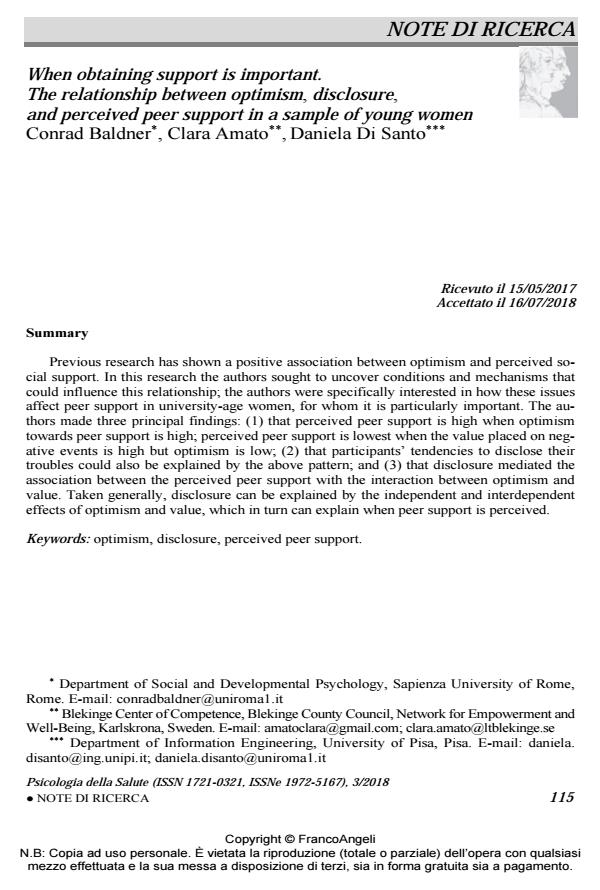When obtaining support is important. The relationship between optimism, disclosure, and perceived peer support in a sample of young women
Journal title PSICOLOGIA DELLA SALUTE
Author/s Conrad Baldner, Clara Amato, Daniela Di Santo
Publishing Year 2018 Issue 2018/3
Language English Pages 16 P. 115-130 File size 226 KB
DOI 10.3280/PDS2018-003006
DOI is like a bar code for intellectual property: to have more infomation
click here
Below, you can see the article first page
If you want to buy this article in PDF format, you can do it, following the instructions to buy download credits

FrancoAngeli is member of Publishers International Linking Association, Inc (PILA), a not-for-profit association which run the CrossRef service enabling links to and from online scholarly content.
Previous research has shown a positive association between optimism and perceived so-cial support. In this research the authors sought to uncover conditions and mechanisms that could influence this relationship; the authors were specifically interested in how these issues affect peer support in university-age women, for whom it is particularly important. The au-thors made three principal findings: (1) that perceived peer support is high when optimism towards peer support is high; perceived peer support is lowest when the value placed on negative events is high but optimism is low; (2) that participants’ tendencies to disclose their troubles could also be explained by the above pattern; and (3) that disclosure mediated the association between the perceived peer support with the interaction between optimism and value. Taken generally, disclosure can be explained by the independent and interdependent effects of optimism and value, which in turn can explain when peer support is perceived.
Keywords: Optimism, disclosure, perceived peer support.
- The hopeful dimension of locomotion orientation: Implications for psychological well-being Daniela Di Santo, Conrad Baldner, Antonio Aiello, Arie W. Kruglanski, Antonio Pierro, in The Journal of Social Psychology /2021 pp.233
DOI: 10.1080/00224545.2020.1803786
Conrad Baldner, Clara Amato, Daniela Di Santo, When obtaining support is important. The relationship between optimism, disclosure, and perceived peer support in a sample of young women in "PSICOLOGIA DELLA SALUTE" 3/2018, pp 115-130, DOI: 10.3280/PDS2018-003006